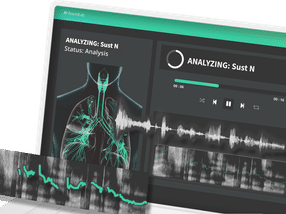More protection against explosives and nuclear material in freight containers
Illegally transported, conventional explosives and nuclearly relevant or radioactive ma-terials can enable international terror organizations to transport hazardous materials for attacks to any place in the world. For improved protection against such hazardous freight, scientists of the Physikalisch-Technische Bundesanstalt (PTB) and an Israeli research center have developed a cargo inspection system which detects conventional explosives - and in addition, also drugs - with the aid of neutron radiography. It is in-tended that the research work should lead to permanently installed facilities at airports and border crossing points, at which containers and cargo pallets with freight can be inspected fully automatically. The research work was supported by the "Science for Peace" Programme of NATO. In a second step, the scientists now plan to utilize gamma radiation, in addition to neutron radiation, to be able to also detect nuclear and radioac-tive materials.
Neutron resonance radiography is the method which the PTB scientists and their Israeli col-leagues have so improved that even very small quantities of explosives can be detected which were undiscoverable with conventional X-ray techniques due to their form or strong shielding. For this purpose, fast neutrons with energies of 1 to 10 MeV are needed. These neutrons, on average as fast as 30000 kilometers per second, are produced at the PTB accelerator facility, a unique European installation for the production and application of fast neutrons. By using the high-energy, fast neutrons, it is possible to detect the material composition of light, particu-larly organic, objects.
In practice, this inspection method will not be used for small pieces of freight, such as cases and baggage, as the facilities are relatively large and thus not able to be accommodated at every airport. After all, an ion accelerator and a relatively great amount of shielding material is needed for the radiation. Therefore, the method is suitable only for freight containers or combined baggage and pallets freight.
Currently, PTB, together with other partners from research and industry, is endeavouring to obtain further funding in order to be able to build such a facility to laboratory scale. Thus, the method could be demonstrated to potential customers and serve as a prototype for an opera-tional facility. This new project, however, goes one step further: Now, not only neutron radia-tion, but also a particular form of gamma radiation is to be used, which is produced together with the neutrons. Radiographing with gamma radiation supplements the neutron technique, as gamma radiation is especially suitable for the detection of heavy elements, such as fission-able and radioactive materials. These materials are moving increasingly into the focus of the national security agencies, as, on the one hand, their further distribution is to be prevented and, on the other hand, these materials could be used by terrorists for building a so-called "dirty bomb" or even a primitive nuclear weapon.
Research in this field not only has a security-political background, but also an economical one: In 2007, the US Government adopted a law which requires that by 2012 the entire naval goods and air freight with USA as country of destination must be inspected for illegal hazard-ous materials already before loading in the foreign harbour or airport. This law is particularly important to countries that trade extensively with the United States, as for example Germany. In future, there will probably be a great demand here for automatic inspection systems, which will allow a corresponding market to evolve.
Most read news
Other news from the department research and development

Get the analytics and lab tech industry in your inbox
By submitting this form you agree that LUMITOS AG will send you the newsletter(s) selected above by email. Your data will not be passed on to third parties. Your data will be stored and processed in accordance with our data protection regulations. LUMITOS may contact you by email for the purpose of advertising or market and opinion surveys. You can revoke your consent at any time without giving reasons to LUMITOS AG, Ernst-Augustin-Str. 2, 12489 Berlin, Germany or by e-mail at revoke@lumitos.com with effect for the future. In addition, each email contains a link to unsubscribe from the corresponding newsletter.






























































